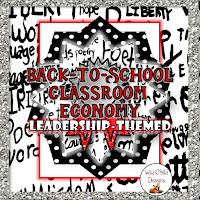With a new school year right around the
corner, all the talk about back-to-school themes makes me miss my mom. My mom was a teacher for over 35 years, and
when anyone talks about classroom themes, I think of her. My mom was a master of themes. When she taught oceans, she turned her
classroom into an oceanic biome.
Jellyfish hung from the ceilings, the classroom walls became the layers
of the ocean, and coral grew from the counter tops.
Her second and third graders ate,
breathed, and slept oceans…until the next unit of study. And there were many… the Sonoran Desert,
tropical rain forests, pioneers, famous Americans, and on and on. What made her themes special was that they
weren’t just decorative. If it didn’t
have academic meat to it, she didn’t do it.
Her kids adored it.
Maybe that’s where I get my theme-tastic
approach to a school year. I’ve taught
an owl theme, reading Owls in the Shower and conservation articles about owls,
dissected owl pellets, collected owl data, and on and on. I’ve taught a myriad of themes.
This year, my classroom theme is my
favorite: LEADERSHIP. That’s right. We
will be focusing on the power and impact words have on the world by looking at
the words and actions of athletes, humanitarians, advocates and activists.
We will be talking about the qualities of
successful and unsuccessful leaders, the responsibilities of leaders, and
desired leadership skills throughout the entire school year.
NOVEL STUDY
I’ll begin the year by reading Perloo the
Bold by Avi. If
you’ve not read this book, you need to!
This story is a Lord of the Rings meets The Poppy & Rye series. Perloo is a Montmer (a rabbit-like race) who has leadership
of his tribe thrust upon him when the tribe’s Granter, from her deathbed, appoints Perloo as the next Granter.
Perloo
is an unwilling leader who must fight for freedom for his tribe as the deceased
leader’s son takes over their tribal government. This novel gives students the opportunity to
examine the behaviors, motives, and words of different characters who act as leaders...some good, some bad.
Nonfiction Connections
While our novel study is ongoing, we will
also be reading real-life biographies using Infographic Biography Mats that I
wrote for this theme. I’m so excited
about these because they can be used in reader’s, writer’s and math workshop. We will be comparing these examples of
leaders to the characters in Perloo the Bold.
Another way we’re investigating
leadership is to examine famous quotations from real-life humanitarians,
activists, athletes, and suffragettes.
We’ll be discussing what their words reveal about their characters and beliefs
about the world. In Perloo the
Bold, there is a sage character called Mogwat the Magpie. Mogwat has given a wealth of wise sayings to
the Montmer
tribe. Many of these sayings are similar
to those from our real-life examples.
We’ll be comparing and contrasting these and sorting them by the life
skills they exemplify. Check out one of Mogwat's sayings below!
To see the world with the eyes of others is to stand atop a new mountain.
So why this theme? I think it’s important for students to know that they have the power to impact the world in a positive way. It helps them realize that they have a purpose in this world, which can give them hope. And, hope is a powerful resource and catalyst. It makes their learning more meaningful and purposeful. Words of Power will become the lens through which we will experience the entire school year!
Happy Back-to-School my friends, and before you leave me, be sure to scroll down for an unbelievable opportunity!
If you’re interested in my Words of Power
products, check them out below! P.S. And yes, they're decorative, too!
I want to make you aware of a fabulous opportunity to win one of 3 $100 gift cards to TpT. Check out this link to do so! The Best of Teacher Entrepreneurs: THREE $100 GIVEAWAYS of TpT Gift Certificates!
I'm teaming up with some fabulous educators this month. Be sure to check out their remarkable blogs below, if you'd like some more back-to-school reading!




















































